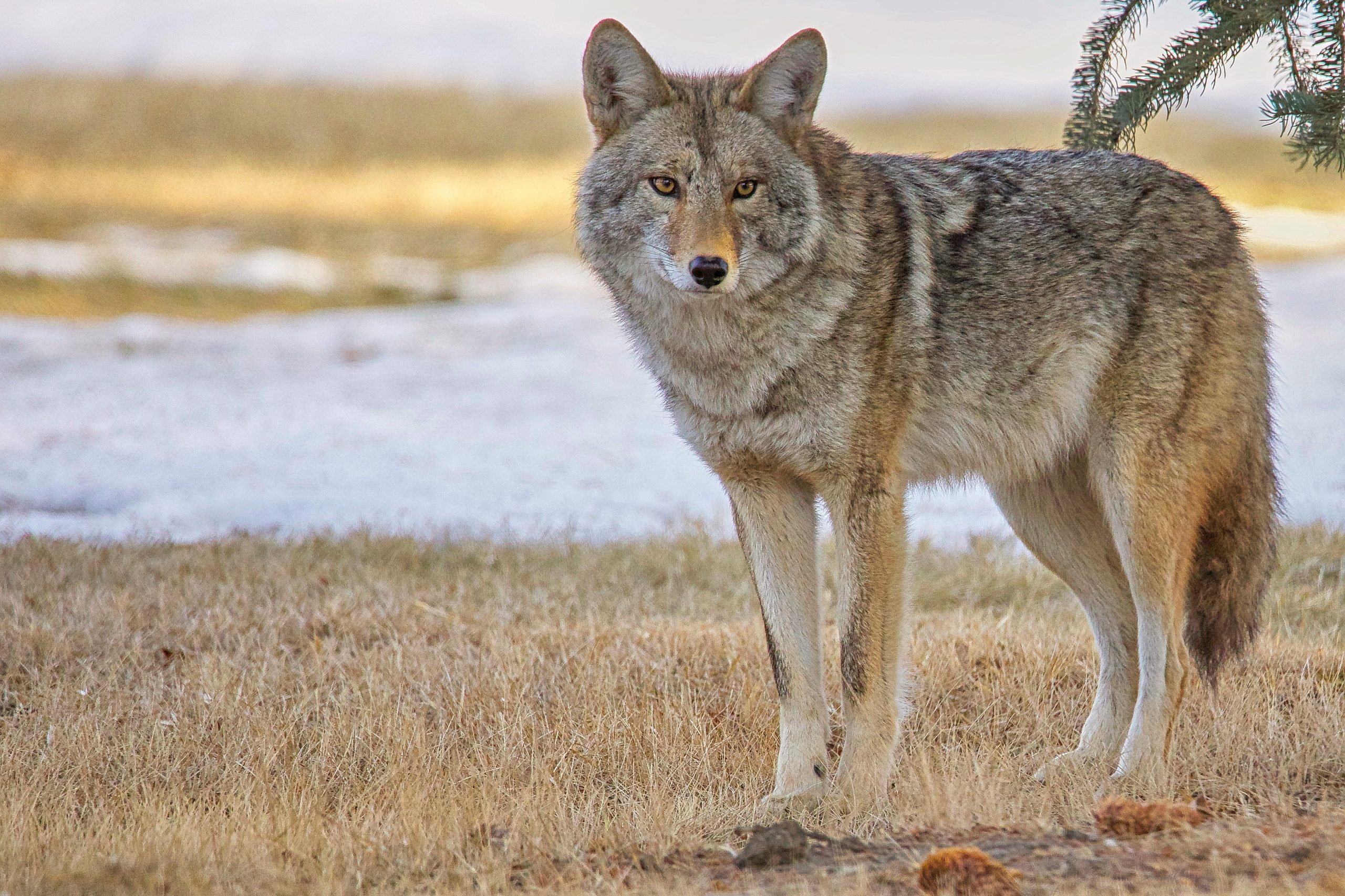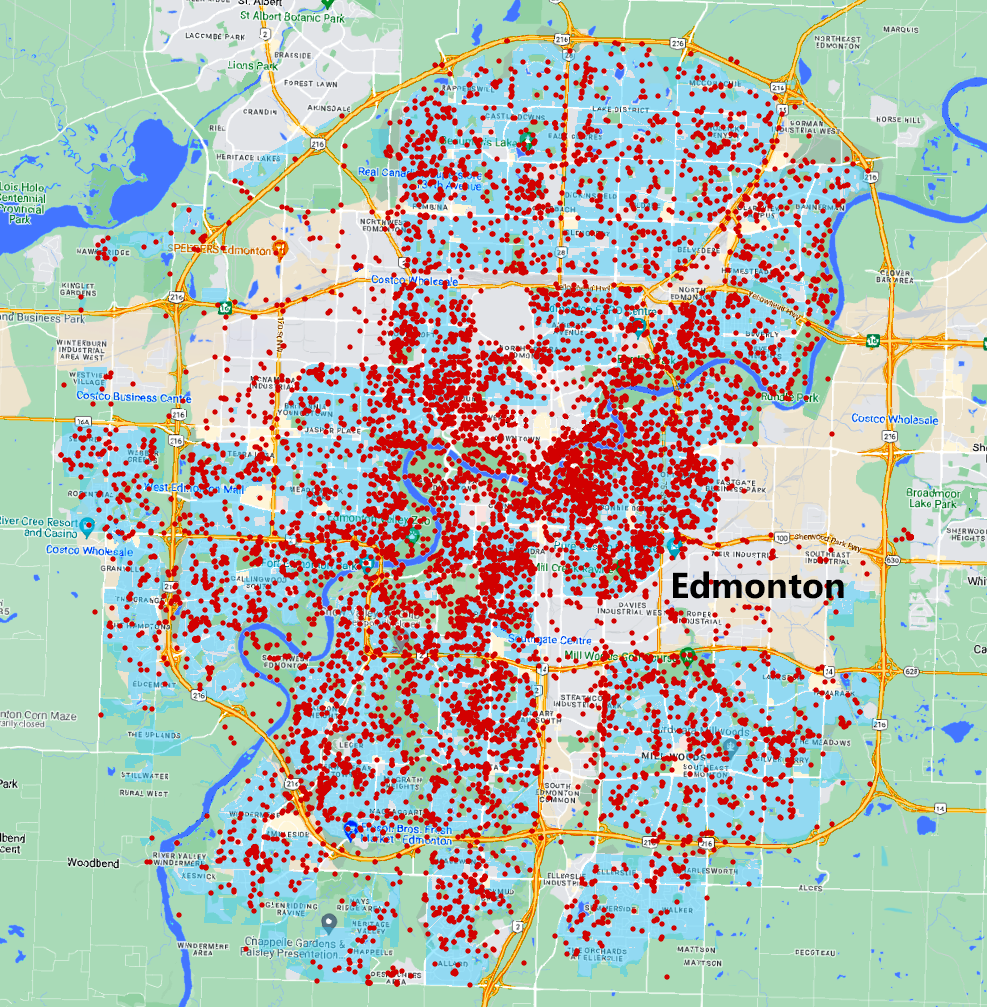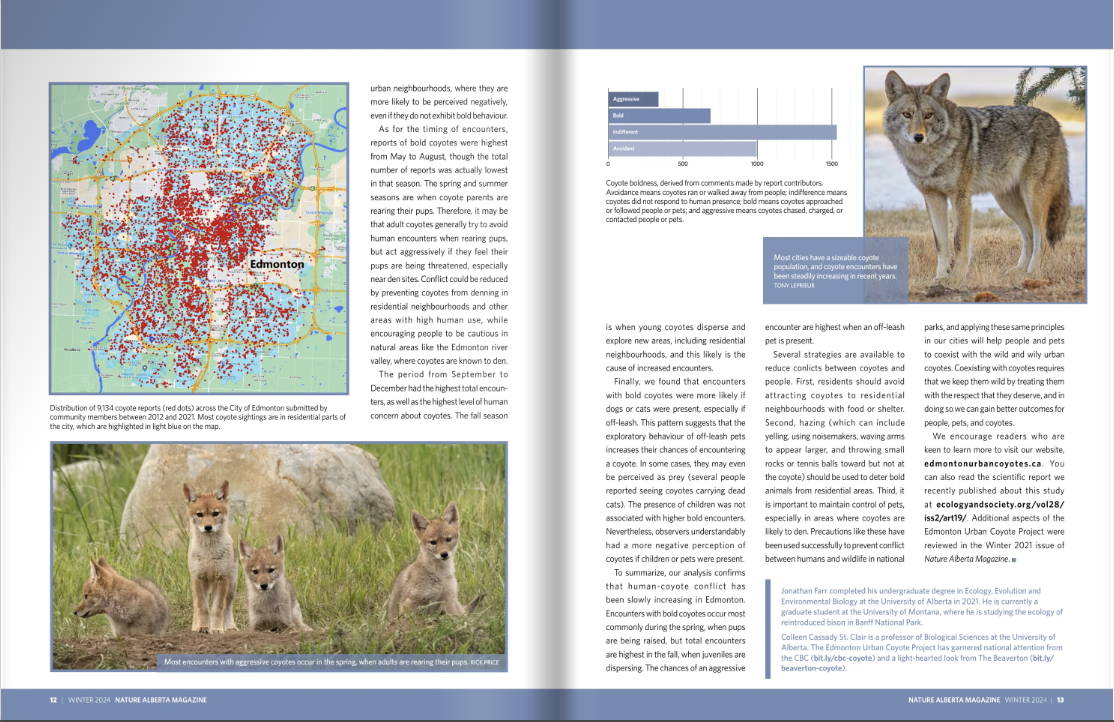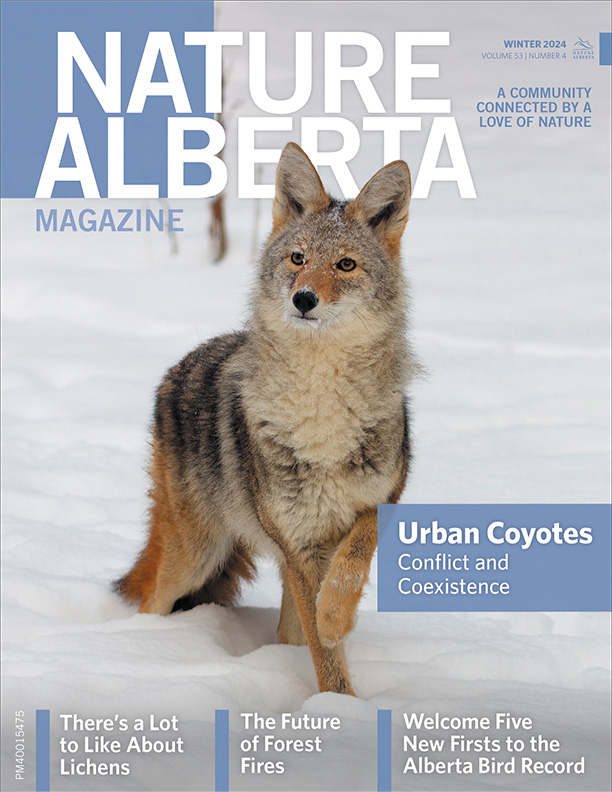Coexisting With Coyotes
23 January 2024

BY JOHNATHAN FARR AND COLLEEN CASSADY ST. CLAIR
Coyote sightings in cities across North America have been steadily increasing, leading many city-dwellers to believe that conflict with urban coyotes is on the rise. This inspired University of Alberta researchers to start the Edmonton Urban Coyote Project, aimed at improving our understanding of these wily urban carnivores and how we can coexist with them. As part of the project, we encouraged Edmontonians to submit firsthand reports of their coyote encounters to our project website. Between January 2012 and December 2021, we received 9,134 reports, which included the location, date, time, and type of encounter. In addition, 97% of participants provided highly detailed comments about their observations.
With help from a team of dedicated volunteers, we analyzed the website reports to extract insights into how coyotes and people interact, how people perceive coyotes, and how these patterns vary across seasons, years, and types of land use. A key question was whether human-coyote conflict has increased over time in Edmonton, as indicated by bold coyote behaviour and people’s level of concern about coyotes. We also sought to unravel the circumstances surrounding negative coyote encounters.
Our analysis of the website reports revealed that encounters with bold coyotes increased from 8% in 2012 to 27% in 2021, which equates to an average increase of 2.2% per year. Reports expressing negative or fearful attitudes about coyotes rose by 1% annually. Both patterns suggest an increase in concern about human-coyote conflict among Edmontonians.
The spatial distribution of the reports showed that the odds of encountering a bold coyote increased in open areas, perhaps because coyotes are less able to hide from dogs or people in such environments and therefore choose fight over flight. Conflict in open areas can be reduced by ensuring dogs are leashed and owners are observant. Coyotes were less bold in areas with higher building density. However, this did not translate into a lower level of concern about coyotes among people in residential neighbourhoods. In fact, the opposite was true. For this reason, it is particularly important to avoid attracting coyotes to urban neighbourhoods, where they are more likely to be perceived negatively, even if they do not exhibit bold behaviour.

Distribution of 9,134 coyote reports across the City of Edmonton submitted by community members between 2012 and 2021. Most coyote sightings are in residential parts of the city, which are highlighted in light blue on the map.
As for the timing of encounters, reports of bold coyotes were highest from May to August, though the total number of reports was actually lowest in that season. The spring and summer seasons are when coyote parents are rearing their pups. Therefore, it may be that adult coyotes generally try to avoid human encounters when rearing pups, but act aggressively if they feel their pups are being threatened, especially near den sites. Conflict could be reduced by preventing coyotes from denning in residential neighbourhoods and other areas with high human use, while encouraging people to be cautious in natural areas like the Edmonton river valley, where coyotes are known to den.
The period from September to December had the highest total encounters, as well as the highest level of human concern about coyotes. The fall season is when young coyotes disperse and explore new areas, including residential neighbourhoods, and this likely is the cause of increased encounters.
Finally, we found that encounters with bold coyotes were more likely if dogs or cats were present, especially if off-leash. This pattern suggests that the exploratory behaviour of off-leash pets increases their chances of encountering a coyote. In some cases, they may even be perceived as prey (several people reported seeing coyotes carrying dead cats). The presence of children was not associated with higher bold encounters. Nevertheless, observers understandably had a more negative perception of coyotes if children or pets were present.
To summarize, our analysis confirms that human-coyote conflict has been slowly increasing in Edmonton. Encounters with bold coyotes occur most commonly during the spring, when pups are being raised, but total encounters are highest in the fall, when juveniles are dispersing. The chances of an aggressive encounter are highest when an off-leash pet is present.
Several strategies are available to reduce conlicts between coyotes and people. First, residents should avoid attracting coyotes to residential neighbourhoods with food or shelter. Second, hazing (which can include yelling, using noisemakers, waving arms to appear larger, and throwing small rocks or tennis balls toward but not at the coyote) should be used to deter bold animals from residential areas. Third, it is important to maintain control of pets, especially in areas where coyotes are likely to den. Precautions like these have been used successfully to prevent conflict between humans and wildlife in national parks, and applying these same principles in our cities will help people and pets to coexist with the wild and wily urban coyotes. Coexisting with coyotes requires that we keep them wild by treating them with the respect that they deserve, and in doing so we can gain better outcomes for people, pets, and coyotes.
We encourage readers who are keen to learn more to visit our website, edmontonurbancoyotes.ca. You can also read the scientific report we recently published about this study at ecologyandsociety.org/vol28/iss2/art19/. Additional aspects of the Edmonton Urban Coyote Project were reviewed in the Winter 2021 issue of Nature Alberta Magazine.
Jonathan Farr completed his undergraduate degree in Ecology, Evolution and Environmental Biology at the University of Alberta in 2021. He is currently a graduate student at the University of Montana, where he is studying the ecology of reintroduced bison in Banff National Park.
Colleen Cassady St. Clair is a professor of Biological Sciences at the University of Alberta. The Edmonton Urban Coyote Project has garnered national attention from the CBC (bit.ly/cbc-coyote) and a light-hearted look from The Beaverton (bit.ly/beaverton-coyote).
Read the Original Article for this Post
For a richer reading experience, view this article in the professionally designed online magazine with all images and graphs in place.
This article originally ran in the Winter 2024 issue of Nature Alberta Magazine (Vol. 53 | No. 4).


